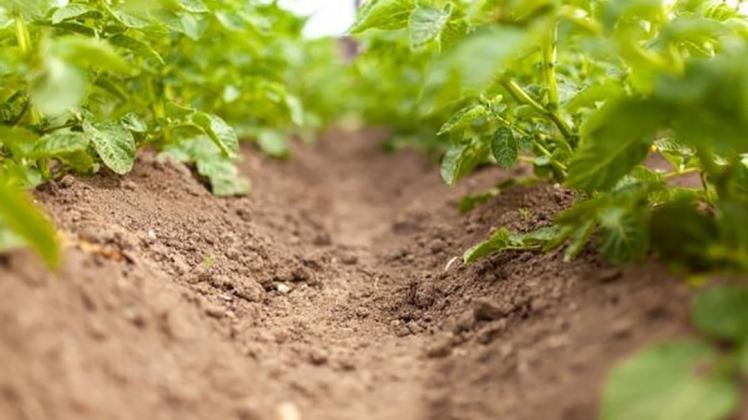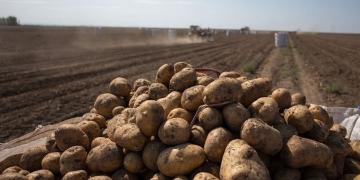EEUU: Potato irrigation – less water, higher expectations
The industry is under pressure due to increased expectations of potato quality from the supermarkets. Previous studies have shown that irrigation plays a crucial role in reducing common scab, but water resources are less available than before.

Water resources have diminished over recent years, becoming more expensive and less available due to strict licencing. Previous AHDB trials have looked at which irrigation system could be the most efficient in terms of water consumption and how water can reduce the risk of common scab in potatoes. This year the comparison of irrigations systems continues. There is also another approach to water availability issues could be overcome by studying the use of brackish in potato irrigation.
SPot Farm trials
In the 2019 trials that took place at SPot North Farm, RJ and AE Godfrey, experts looked at the use of three of the most common types of irrigation systems: gun, trickle and boom. The focus was on water use and costs.
“The water consumption was observed to be much lower when applied with drip irrigation. However, there are other expenses which have to be taken in consideration, such as cost of installation and management, before deciding which irrigation system could be the choice for the potato growers,” said Nicola Dunn, AHDB Resource Management Scientist.
Common scab control trials
Water consumption should be controlled carefully. However, enough irrigation must be applied to the growing crop in order to avoid the risk of diseases such as common scab. In 2009, field experiments were conducted at Cambridge University Farming (CUF) using the varieties Maris Piper, Hermes and Vales Sovereign. The trial’s objective was to learn if irrigation can help reduce the risk of common scab in potato crops. Five irrigation regimes were used: irrigation at 20 mm SMD throughout the experiment; 20 mm SMD throughout, except for between four and six weeks after tuber initiation; over-irrigation for three weeks post-tuber initiation; over-irrigation between 10 and 13 weeks post-initiation; and unirrigated.
Scab control was most effective when plots were maintained at field capacity following tuber initiation, although over-irrigation was detrimental to canopy duration and yield. In dry soils, populations of pathogenic Streptomyces, the causal agents of common scab, increased between three and four weeks after tuber initiation. Levels were lower in irrigated soils.
“The critical period for control of scab by irrigation was between one and three weeks following tuber initiation. Water should be applied evenly to the crop in order to maintain the correct rates of soil moisture deficit and avoid overwatering some parts of the field as this could lead to cracking and other issues,” said Mark Stalham, Head of CUF.
Brackish water trials
We continue to fund studies looking at how water-availability issues could be overcome without sacrificing yield quality or soil health. Trials run by Innovative Farmers are taking place in Holbeach Marsh, one of the driest regions in the UK, where water requirements for healthy potato growth and control of common scab are high. Under future climate projections, freshwater supply is at risk, due to more unpredictability in rainfall events, and increased saline intrusion of groundwater reserves, which could impact on potato yields in the area.
In the trials hosted by G H Hoyles, member of Nene Potatoes Ltd, the effect of brackish water in irrigation on Maris Piper yield and soil health are being investigated. There is currently limited data available for looking at the salinity tolerance of the typical UK potato varieties in the UK soils and climatic conditions. The trials consist of five plots, each representing a different treatment. On the first three plots, brackish water containing different levels of salinity (950 to 4,000 parts per million) will be applied with drip irrigation. The fourth plot is an unirrigated control. The fifth plot will be irrigated with brackish water containing a low level of salinity (950 ppm) applied by boom
Drip irrigation can be a much more efficient use of water than overhead delivery on silt soils. It could also avoid the problems of delivery into the ridge in hydrophobic soils and leaf scorch from a brackish source. All involved are aware of potential damage to soil microbiology and structure of excess salinity, so numerous soil tests are being undertaken.
The final results of these trials will be available at the end of this year and could help growers achieve a more efficient irrigation management and inform decisions about installing reservoirs for winter fill. Mark Taylor, Vice-Chair of Nene Potatoes Ltd, said: “We don’t expect these results to be definitive, but they could give us a tipping point in regards to what salinity level we could consider using, which would be a great step forward.”
For more information:
AHDB
Fuente: https://www.freshplaza.com/article/9229794/potato-irrigation-less-water-higher-expectations/









